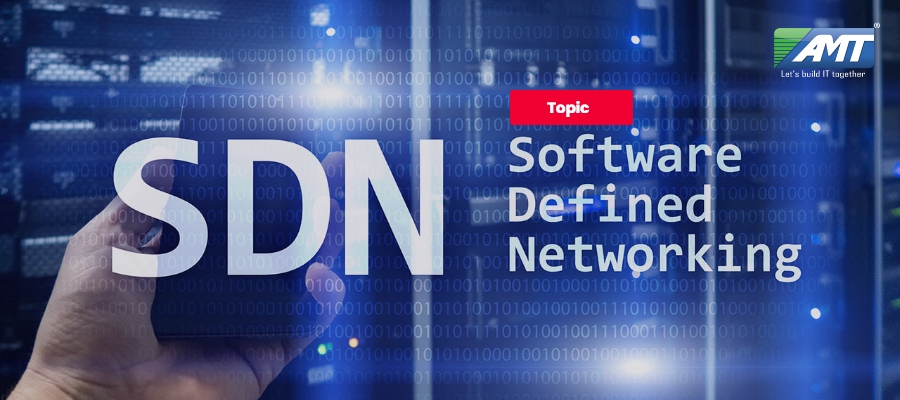Software-defined networking (SDN) technology is an approach to network management that enables dynamic, programmatically efficient network configuration in order to improve network performance and monitoring making it more like cloud computing than traditional network management. SDN is meant to address the fact that the static architecture of traditional networks is decentralized and complex while current networks require more flexibility and easy troubleshooting. SDN attempts to centralize network intelligence in one network component by disassociating the forwarding process of network packets (data plane) from the routing process (control plane). The control plane consists of one or more controllers which are considered as the brain of SDN network where the whole intelligence is incorporated. However, the intelligence centralization has its own drawbacks when it comes to security, scalability and elasticity and this is the main issue of SDN.
SDN was commonly associated with the OpenFlow protocol (for remote communication with network plane elements for the purpose of determining the path of network packets across network switches) since the latter’s emergence in 2011. However, since 2012 OpenFlow for many companies is no longer an exclusive solution, they added proprietary techniques. These include Cisco Systems’ Open Network Environment and Nicira’s network virtualization platform.
SD-WAN applies similar technology to a wide area network (WAN).
SDN architectures decouple network control and forwarding functions, enabling network control to become directly programmable and the underlying infrastructure to be abstracted from applications and network services.
The OpenFlow protocol can be used in SDN technologies. The SDN architecture is:
- Directly programmable: Network control is directly programmable because it is decoupled from forwarding functions.
- Agile: Abstracting control from forwarding lets administrators dynamically adjust network-wide traffic flow to meet changing needs.
- Centrally managed: Network intelligence is (logically) centralized in software-based SDN controllers that maintain a global view of the network, which appears to applications and policy engines as a single, logical switch.
- Programmatically configured: SDN lets network managers configure, manage, secure, and optimize network resources very quickly via dynamic, automated SDN programs, which they can write themselves because the programs do not depend on proprietary software.
- Open standards-based and vendor-neutral: When implemented through open standards, SDN simplifies network design and operation because instructions are provided by SDN controllers instead of multiple, vendor-specific devices and protocols.
The explosion of mobile devices and content, server virtualization, and advent of cloud services are among the trends driving the networking industry to re-examine traditional network architectures. Many conventional networks are hierarchical, built with tiers of Ethernet switches arranged in a tree structure. This design made sense when client-server computing was dominant, but such a static architecture is ill-suited to the dynamic computing and storage needs of today’s enterprise data centers, campuses, and carrier environments. Some of the key computing trends driving the need for a new network paradigm include:
- Changing traffic patterns
- Within the enterprise data center, traffic patterns have changed significantly. In contrast to client-server applications where the bulk of the communication occurs between one client and one server, today’s applications access different databases and servers, creating a flurry of “east-west” machine-to-machine traffic before returning data to the end user device in the classic “north-south” traffic pattern. At the same time, users are changing network traffic patterns as they push for access to corporate content and applications from any type of device (including their own), connecting from anywhere, at any time. Finally, many enterprise data centers managers are contemplating a utility computing model, which might include a private cloud, public cloud, or some mix of both, resulting in additional traffic across the wide area network.
- The “consumerization of IT”
- Users are increasingly employing mobile personal devices such as smartphones, tablets, and notebooks to access the corporate network. IT is under pressure to accommodate these personal devices in a fine-grained manner while protecting corporate data and intellectual property and meeting compliance mandates.
- The rise of cloud services
- Enterprises have enthusiastically embraced both public and private cloud services, resulting in unprecedented growth of these services. Enterprise business units now want the agility to access applications, infrastructure, and other IT resources on demand and à la carte. To add to the complexity, IT’s planning for cloud services must be done in an environment of increased security, compliance, and auditing requirements, along with business reorganizations, consolidations, and mergers that can change assumptions overnight. Providing self-service provisioning, whether in a private or public cloud, requires elastic scaling of computing, storage, and network resources, ideally from a common viewpoint and with a common suite of tools.
- “Big data” means more bandwidth
- Handling today’s “big data” or mega datasets requires massive parallel processing on thousands of servers, all of which need direct connections to each other. The rise of mega datasets is fueling a constant demand for additional network capacity in the data center. Operators of hyperscale data center networks face the daunting task of scaling the network to previously unimaginable size, maintaining any-to-any connectivity without going broke.
- The above is a brief about Software-defined networking. Watch this space for more updates on the latest trends in Technology.
